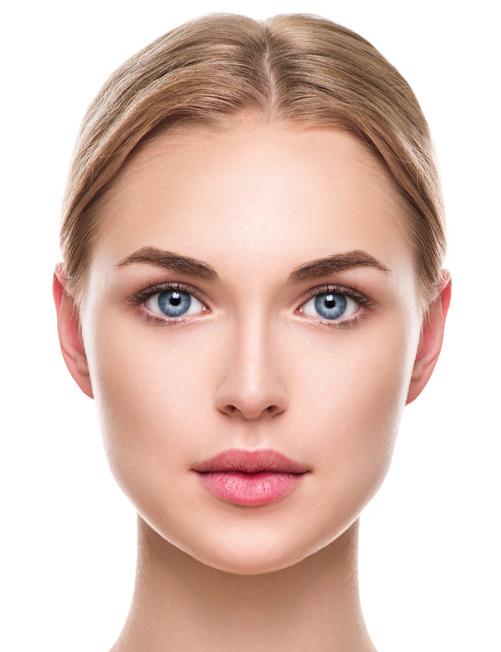@aestheticsgroup
@aestheticsjournaluk
Aesthetics
aestheticsjournal.com
Considerations for Cheeks
bony structure may also have positively selected the appropriate bone structure to compete for female partners, food and other resources, acting as a protective buttress from physical blows.4
Dr Tino Solomon explores the attractiveness of cheeks and shares advice for augmentation
Understanding the anatomy of the mid-face and the changes that occur is crucial when augmenting the cheek and cheekbone area. When considering the anatomy of the cheeks, the adjacent areas must also be taken into account to ensure proportional facial metrics and maintaining beauty standards. Beauty and restoration of the structure of youth are the concepts here. The cheekbone region consists of both the zygomatic (malar) bone and the zygomatic arch. The zygomatic bone is adjoined, via four processes, to the maxilla, temporal, sphenoid and frontal bones, and is responsible for creating the cheek prominence. The zygomatic arch is formed by the zygomatic process of the temporal bone and the temporal process of the zygomatic bone. Nerves and vessels arising from this area include:5 • The zygomatic nerve, a branch of the trigeminal maxillary nerve that emerges from the zygomaticofacial foramen • The zygomatic artery, which emerges alongside the zygomatic nerve • The zygomatic branches of the facial nerve, which travels along the zygomatic bone to the lateral margin of the orbit
Mid-face anatomy
Objective standards of beauty are observed across many cultures. Be it plump lips to certain ratios, symmetrical faces or a particular face shape. It has never been fully understood why some of these features are ‘standard attractive’, despite various hypotheses proposing evolutionary advantages and involving facial metrics, which attempt to explain this.1,2,3 High cheekbones are a facial trait that is universally valued in terms of attractiveness. When our subconscious is assessing one’s character, higher cheekbones have been shown to be considered more trustworthy than individuals with shallower cheekbones.1 In the field of aesthetics, as practitioners, we facilitate augmentation of the cheekbones. Various non-surgical techniques are available and utilised to achieve this aesthetic ideal. This article will explore what it is about the mid-face that people find facially attractive, anatomical considerations, and what modalities we have available to augment and achieve the desired aesthetic outcome.
The beauty of cheeks Recent evidence suggests we naturally judge faces in a fraction of second.2 A functional MRI study has demonstrated an association of high cheekbones with trustworthiness and approachability, together with large eyes and a broad smile, which also indicate attractiveness. Conversely, lower inner eyebrows and shallow cheekbones were seen as untrustworthy.2 Facial metrics, often cited as the mathematical explanation for attractiveness, are particularly relevant here, with cheekbones playing a significant part in shaping and volumising the mid-face longitudinally and laterally.3 A neurophysiological study utilising functional MRI on subjects viewing a multitude of faces of varying proportions showed the attraction response to different facial ratios, noting the importance of facial width to length with evidence for the hypothesis that human faces with variable proportions have differential attractiveness.3 A more detailed mathematical approach was taken in a study of facial metrics, which was assessed on a scale of beauty and attractiveness. Whole face length and width measurements, symmetrical division of the face into vertical thirds and horizontal fifths were also measured and rated (Figure 1). The importance of the cheekbone, with its contribution to width in all these measurements was determinant in facial ratio calculations.2 Prominent cheekbones are a marker of sexual maturity. The rounded child face elongates as puberty sets in and the development of the zygomatic bone correlates with maturation into adults. Men’s cheekbone growth is directly linked to the testosterone surge in puberty. A theory put forward by evolutionary biologists suggests that selection of sexual partners historically preferred strong features, such as prominent cheekbones. Evolution of our
1.618
1.0
1/3
2/3
1/5
1/5
1/5
1/5
1/5
Figure 1: Depiction of facial fifths and ‘ideal’ vertical to horizontal ratios.2
When considering the anatomy of the cheeks, the adjacent areas must also be taken into account to ensure proportional facial metrics and maintain beauty standards
Reproduced from Aesthetics | Volume 7/Issue 3 - February 2020













